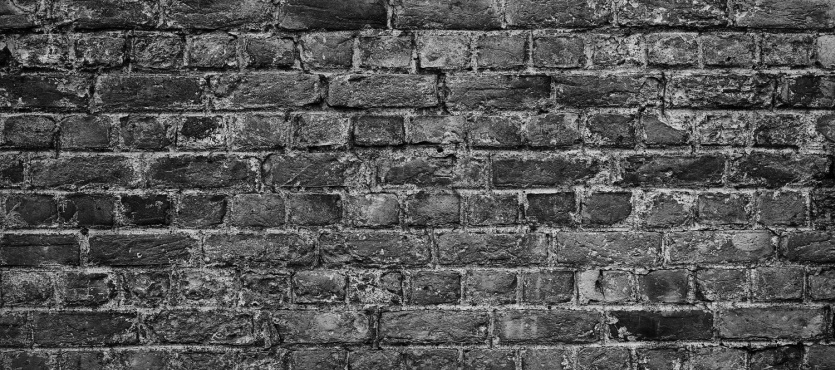Brick bonds are patterns or arrangements in which bricks are laid in a wall or structure. These bonds serve both functional and aesthetic purposes in masonry construction. There are several different types of brick bonds, each with its own unique characteristics. Different bonds can also be combined within a single structure to achieve specific design and structural goals. Here are some common brick bond patterns:
- Stretcher Bond
In this bond, all bricks are laid in a single row with their stretchers facing outward. It is generally not suitable for load-bearing walls but can be used for garden walls or partition walls. Stretcher bond is the simplest and most common brick bond. This bond is often used for walls where strength and appearance are not critical, such as garden walls and interior partitions.
- Header Bond
The header bond is a bricklaying pattern in which bricks are arranged so that the short end, or header, of the brick faces outward. This bond creates a distinctive pattern of exposed headers on the surface of the wall. It is typically used for the construction of walls that are one-half brick thick, such as cavity walls and partitions.
- English Bond
Similar to the Flemish bond, this bond alternates rows of stretchers and headers, but the headers are centered over the stretchers in every other row. This bond provides good strength and aesthetics. English bond alternates rows of stretchers (long sides) and headers (short ends) to improve the structural integrity of the wall. It is commonly used in load-bearing walls and provides an attractive appearance due to its alternating pattern.
- Flemish Bond
This is an attractive and strong bond. Flemish bond is another pattern that alternates stretchers and headers in each course, but it uses a combination of both header and stretcher bricks within the same course. It is often used for decorative or high-quality brickwork, such as facades and prominent walls.
- Garden Wall Bond
Similar to stretcher bond, this pattern involves laying all bricks as stretchers, but it includes occasional headers for added strength. It’s often used for non-structural garden walls. A garden wall bond, also known as a common bond, is suitable for non-load-bearing walls like garden walls, where some structural stability is required.
- Diagonal Bond
A diagonal brick bond, also known as a diagonal bond or diamond bond, is a bricklaying pattern in which bricks are set at a 45-degree angle to the horizontal and vertical axes of the wall. This arrangement creates a distinctive diagonal or diamond-shaped pattern on the wall’s surface. It is often used for accent features on walls and floors.
- Stack Bond
In stack bond, all bricks are stacked directly on top of each other, with no overlapping. This bond is primarily used for decorative purposes, as it lacks the structural stability of other bonds. It is often used in modern or contemporary designs.
- Rat Trap Bond
The Rat Trap Bond, also known as the cavity wall bond, is a type of brick bond that incorporates a series of vertical and horizontal cavities within the thickness of the wall. It’s named “Rat Trap” due to the resemblance of these cavities to a rat trap’s compartments. This design provides thermal insulation and is energy-efficient.
Conclusion
The choice of brick bond depends on various factors, including the structural requirements of the wall, aesthetics, and the availability of materials. Different bonds offer different strengths and visual effects, allowing architects and builders to create unique and appealing structures.
While the choice of brick bond is crucial, the key to every successful build-out is an experienced team of masons. Whether you are restoring, remodeling, or repairing, experts at Turnbull Masonry are equipped to face any challenge you throw at them. Speak with one of our amazing team members today to find out more about our services.

